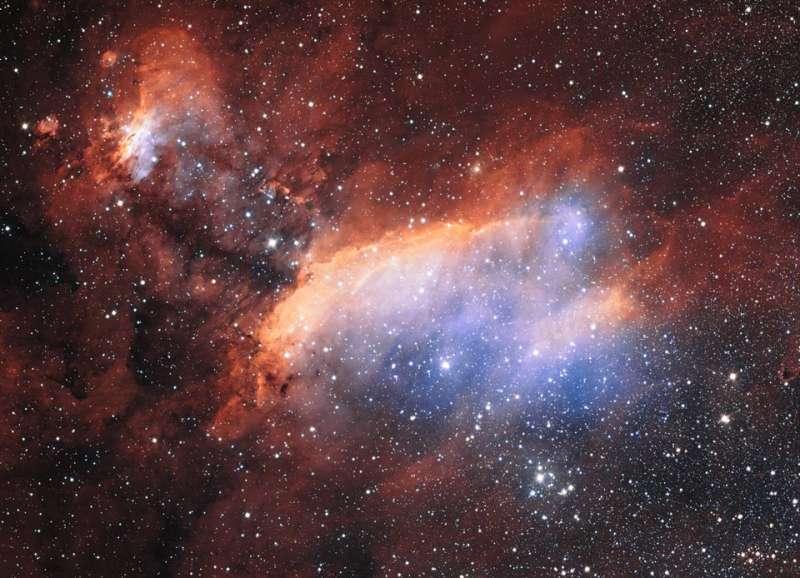Credit & Copyright: ESO;
Acknowledgement:
Martin Pugh
Explanation:
South of Antares, in the tail of
the nebula-rich constellation
Scorpius, lies emission nebula
IC 4628.
Nearby hot, massive stars, millions of years young,
radiate the
nebula with invisible ultraviolet light, stripping electrons
from atoms.
The electrons eventually recombine with the atoms to produce the visible
nebular glow,
dominated by the red emission of
hydrogen.
At an estimated distance of 6,000 light-years,
the region shown
is about 250 light-years across,
spanning an area equivalent to
four full moons on the sky.
The nebula is also
cataloged as Gum 56 for Australian astronomer
Colin Stanley Gum,
but seafood-loving astronomers might
know
this cosmic cloud as The
Prawn Nebula.
Astrophysicists: Follow
ASCL on
Facebook,
G+, or
Twitter
Authors & editors:
Robert Nemiroff
(MTU) &
Jerry Bonnell
(USRA)
NASA Web Site Statements, Warnings,
and Disclaimers
NASA Official: Jay Norris.
Specific
rights apply.
A service of:
LHEA at
NASA /
GSFC
& Michigan Tech. U.
Based on Astronomy Picture
Of the Day
